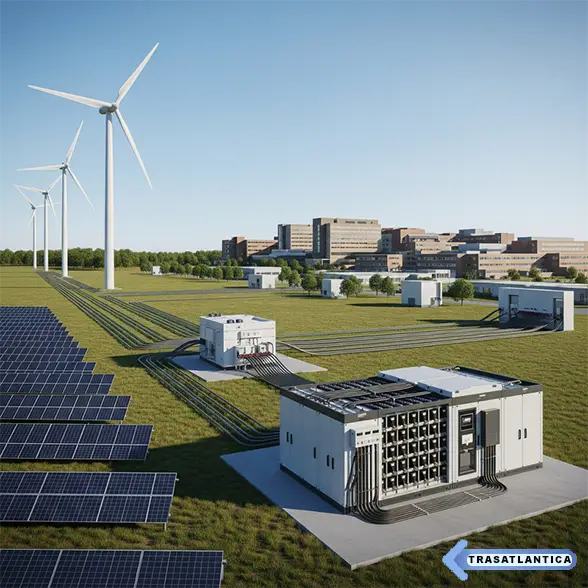Energy Storage in Microgrids plays a crucial role in enhancing the reliability and efficiency of localized power systems. By storing excess energy generated from renewable sources such as solar and wind, microgrids can supply power consistently even when generation fluctuates. This capability is essential for off-grid communities and critical facilities that require uninterrupted electricity. As microgrid adoption increases globally, innovative storage technologies are transforming energy management at the local level.
Energy Storage in Microgrids Enhancing Reliability and Resilience
Microgrids equipped with advanced storage systems can operate independently from the main grid, providing resilience against outages and disturbances. Energy storage allows these systems to balance supply and demand effectively, minimizing interruptions. Technologies like lithium ion batteries and flow batteries offer scalable solutions tailored to microgrid needs. Additionally, storage supports peak shaving by releasing stored energy during high demand periods, reducing stress on generation assets. Such capabilities are increasingly important as climate-related events pose risks to centralized power infrastructure.
Innovations in Energy Storage Driving Microgrid Performance
Recent developments focus on improving storage capacity, efficiency, and lifecycle to meet diverse microgrid requirements. Hybrid storage systems combine chemical and mechanical methods to optimize performance across varying conditions. Smart energy management platforms enable real time monitoring and adaptive control, ensuring optimal charge and discharge cycles. These advancements enhance operational flexibility and reduce maintenance costs. Furthermore, integration with distributed energy resources and demand response programs empowers consumers to participate actively in energy management, fostering sustainable and cost effective solutions.
Economic and Environmental Impact of Storage in Microgrids
Investing in energy storage for microgrids yields significant economic benefits by reducing reliance on fossil fuel generators and lowering operational expenses. Lifecycle cost reductions result from improved storage durability and optimized usage patterns. Environmentally, storage integration facilitates higher renewable penetration, decreasing greenhouse gas emissions and air pollution. Policy incentives and subsidies support deployment, especially in remote or underserved areas. As a result, energy storage contributes to equitable access to clean and reliable electricity while promoting sustainability goals.
Strategic Outlook for Energy Storage in Microgrid Expansion
The future of microgrids depends heavily on continued advancements and strategic deployment of energy storage technologies. Coordination among stakeholders, including utilities, regulators, and technology providers, ensures effective integration and scalability. Emerging trends emphasize modular and plug and play storage solutions that simplify installation and upgrades. Additionally, coupling storage with electric vehicle infrastructure and smart grids offers synergistic benefits. Overall, energy storage will remain a foundational element in the evolution of resilient, sustainable, and autonomous microgrid systems.
In summary, energy storage transforms microgrid capabilities by improving reliability, operational efficiency, and environmental performance. Ongoing innovation and supportive policies will drive further adoption, enabling microgrids to play a pivotal role in the decentralized energy future.
